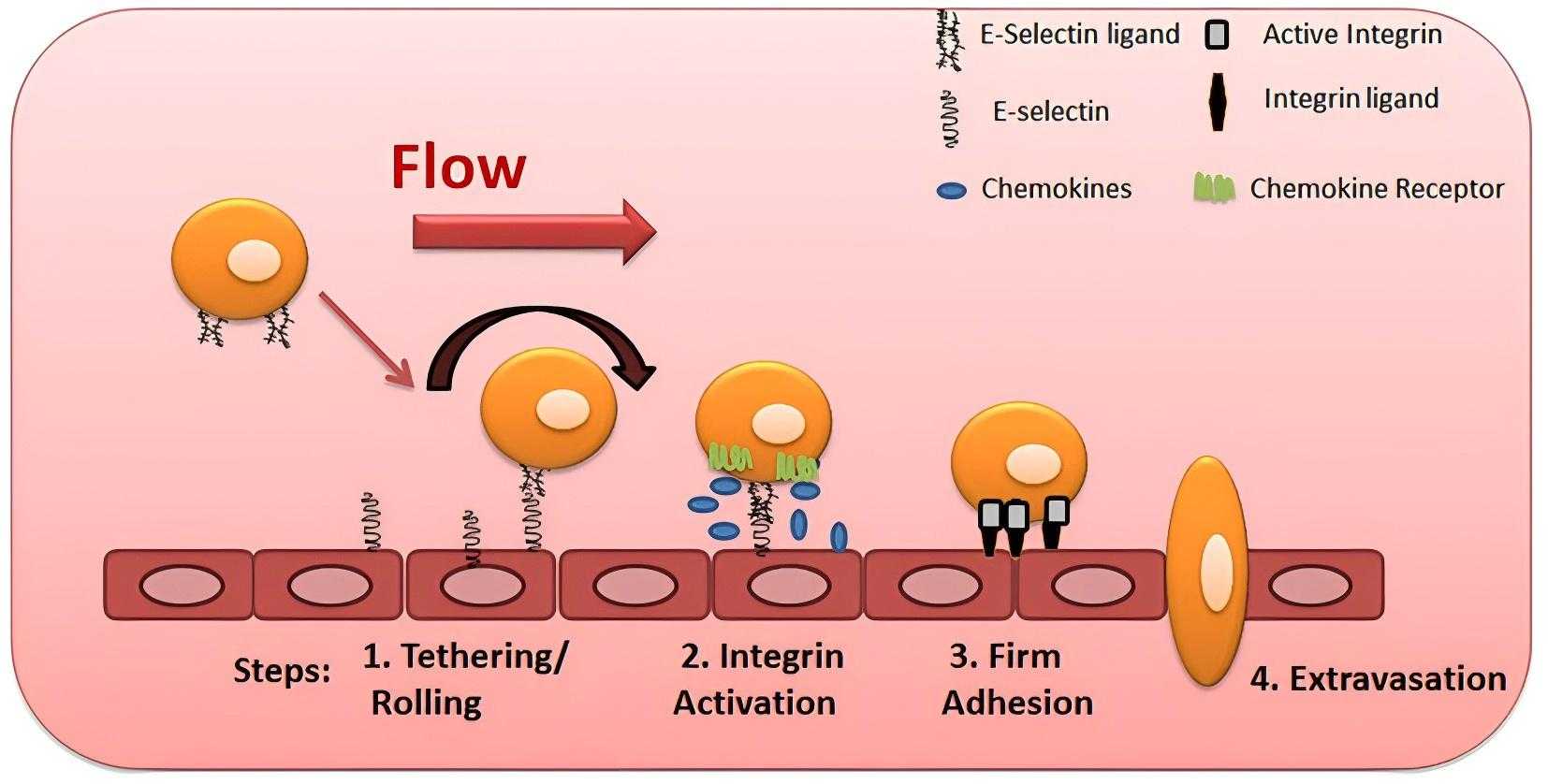Creative Biolabs is a leading service provider that focuses on polyclonal, monoclonal, and recombinant antibody development for research, diagnosis, and potential therapeutics. Based on our extensive experience and state-of-the-art platforms, Creative Biolabs now offers a series of biomarker-specific IVD (in vitro diagnostic) antibody development services to clients globally. Especially, we introduce our IVD antibody development services for the ELAM-1 (endothelial-leukocyte adhesion molecule 1) marker.
ELAM-1
ELAM-1 (endothelial-leukocyte adhesion molecule 1), is alternatively called E-selectin, CD62E (CD62 antigen-like family member E), or LECAM2 (leukocyte-endothelial cell adhesion molecule 2). It is a cell adhesion molecule expressed only on endothelial cells activated by cytokines. ELAM-1 is encoded by the SELE gene in humans. It plays a vital role in inflammation, like other selectins. ELAM-1 has a cassette structure, which consists of an N-terminal, C-type lectin domain, an EGF (epidermal-growth-factor)-like domain, a transmembrane domain (TM), 6 sushi domain (SCR repeat) units, and an intracellular cytoplasmic tail (cyto). ELAM-1 is not stored in the cell and has to be transcribed, translated, and then transported to the cell surface. The production of ELAM-1 is stimulated by the expression of P-selectin, which is stored in vesicles called Weibel-Palade bodies and acts as a cell adhesion molecule (CAM) on the surfaces of activated endothelial cells. And in turn, P-selectin is stimulated by TNFα (tumor necrosis factor α), IL-1 (interleukin-1) and LPS (lipopolysaccharide).
 Fig. 1 E-selectin is involved in the multistep model of circulating blood cell adhesion and migration across the vascular endothelium.1, 2
Fig. 1 E-selectin is involved in the multistep model of circulating blood cell adhesion and migration across the vascular endothelium.1, 2
The Role of ELAM-1 in Sepsis
Sepsis is a severe and life-threatening systemic inflammatory response to infection. The pathophysiology of sepsis is related to aberrant interaction between the vascular endothelium and leukocytes. The vascular endothelium regulates leukocyte extravasation into tissues by the induction and modulation of endothelial cell adhesion molecules, such as ELAM-1. During inflammation, ELAM-1 plays a pivotal role in recruiting leukocytes to the injured region. The over-expression of ELAM-1 on endothelial cells of nearby blood vessels is induced by cytokines IL-1 and TNF-α which are locally released by macrophages. Along with the progress of inflammatory response, the adhesion molecules released by injured tissues get into the blood vessels and activate the rolling leukocytes, and thus could closely bind to the endothelial surface and begin to enter the tissue. Soluble ELAM-1 are found in serum at low levels in healthy individuals, while these levels are significantly increased in septic patient. Accordingly, shedding of ELAM-1 has thus been suggested to limit leukocyte-endothelial interactions both by reducing the cell surface density on the endothelium and by generating an intravascular competitive inhibitor or soluble ELAM-1 (called the decoy ligand) for leukocytes and thus decreasing collateral damage in the host.
 Fig.2 Endothelial cell response in sepsis. Activated endothelial cells (red-colored cells) express increased levels of E-selectin, P-selectin, intercellular adhesion molecule (ICAM)-1, and vascular cell adhesion molecule (VCAM)-1. (Shapiro N I., 2010)
Fig.2 Endothelial cell response in sepsis. Activated endothelial cells (red-colored cells) express increased levels of E-selectin, P-selectin, intercellular adhesion molecule (ICAM)-1, and vascular cell adhesion molecule (VCAM)-1. (Shapiro N I., 2010)
IVD Antibody Development Services Targeting ELAM-1
Above all, the adhesion molecules such as ELAM-1 turn to shed from cell surfaces and accumulate in the blood as soluble isoforms, which has been regarded as potential prognostic disease biomarkers. Through our role as a leading antibody service provider, Creative Biolabs is well-positioned to deliver high-quality IVD antibody development services targeting numerous biomarkers of sepsis, including ELAM-1. With years of devotion and accumulation in this particular field, Creative Biolabs is confident in offering you the best products and services.
For more detailed information, please feel free to contact us or directly send us an inquiry.
References
- Silva, Mariana, Paula A. Videira, and Robert Sackstein. "E-selectin ligands in the human mononuclear phagocyte system: implications for infection, inflammation, and immunotherapy." Frontiers in immunology 8 (2018): 1878.
- Shapiro, Nathan I., et al. "The association of endothelial cell signaling, severity of illness, and organ dysfunction in sepsis." Critical care 14 (2010): 1-12.
- under Open Access license cc BY 4.0. without modification.
For Research Use Only.

